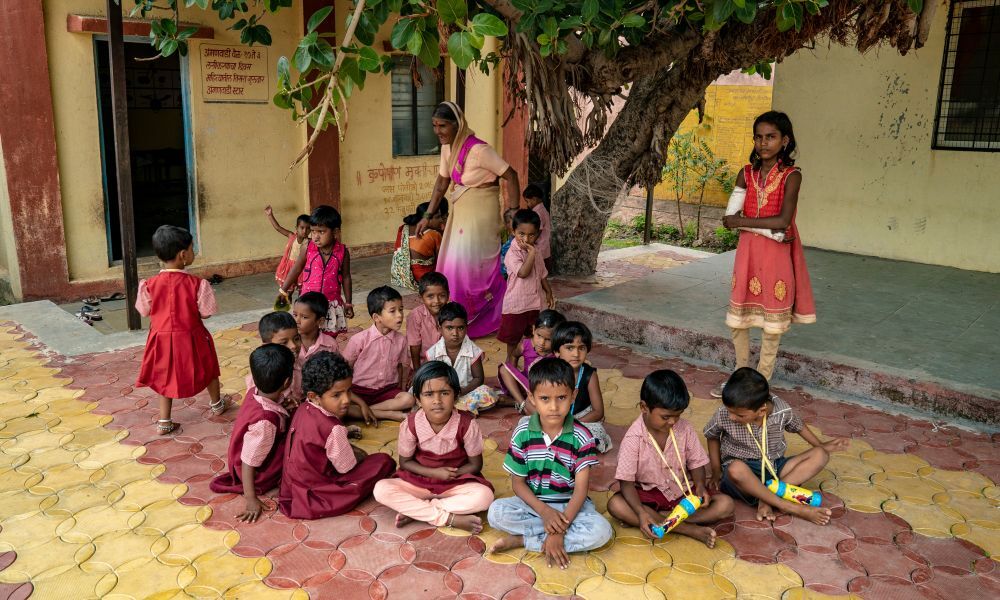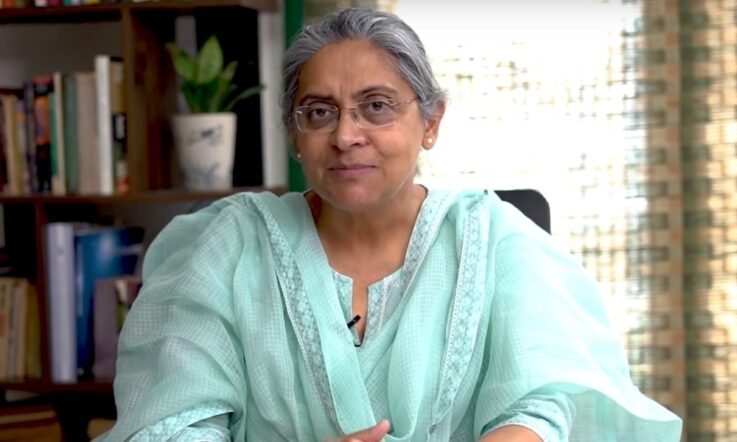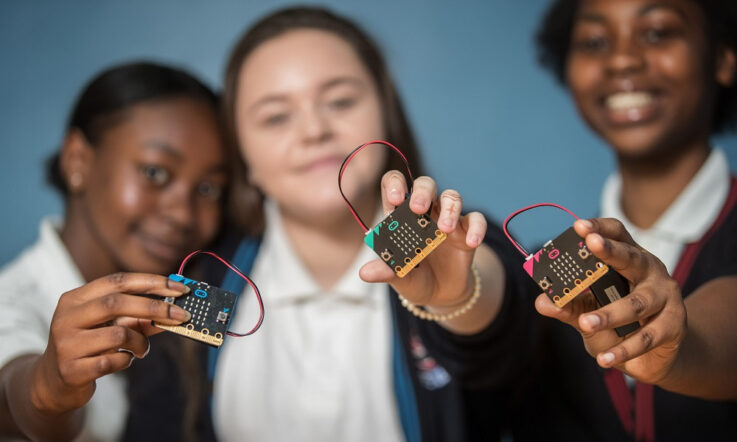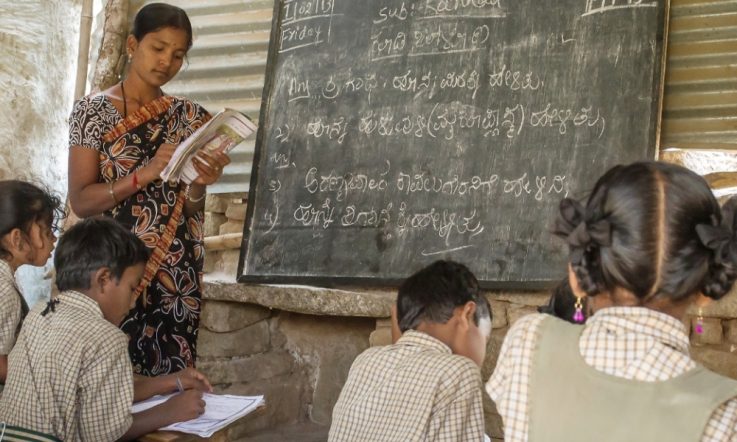In this QA&, the co-founders of Rocket Learning Azeez Gupta and Namya Mahajan, Curriculum Lead Sukhna Sawhney and Communications Manager Sushmita Roy tell Teacher how they are strengthening the early education ecosystem in India. Anganwadi centres are rural centres providing supplementary nutrition, basic healthcare, and preschool education in India.
What are the challenges of preschool education in India?
India proudly boasts the world's largest free and publicly funded daycare network – Anganwadi centres. With a vision to ensure universal early childhood education by 2050, the country has taken impressive strides.
Yet, the current reality of preschool education in India is bleak. Access is limited, quality needs more consistency, and Anganwadi workers need more resources. The curriculum needs to be implemented at the last mile, parental involvement needs to be improved, and centres need adequate monitoring.
Urgent action is required — government initiatives, increased investment, teacher training, curriculum reforms, community engagement, and awareness campaigns are crucial to safeguard the future of preschool education in India.
What are your learnings from the experience of implementing programs to improve the quality of early childhood education?
While primary school enrollment in India has increased over the last few years, with 12.18 crore children attending schools, there has been a significant decline in learning outcomes. The percentage of children in class 3 in government and private schools who can read at class 2 level dropped from 27.3% in 2018 to 20.5% in 2022, thanks in part to COVID-19 (Pratham, 2023, p. 49).
Our surveys across 8 states and tens of thousands of parents and Anganwadi workers reveal that these problems can be solved only with a good foundation in preschool, which is inhibited by a few factors:
- Parents still view Anganwadi centres as ‘nutrition centres’.
- Parents need to be made aware of the importance of early learning, especially at home. While they view education as a tool to escape generational poverty, they are unaware that learning begins at birth and the first 2,000 days are critical for their children's growth.
- More understanding and resource availability is needed in Anganwadi centers to create educational lessons best suited for the 3 to 6 age group.
- Anganwadi workers are overburdened and do not have adequate exposure and training to become well-suited educators.
In the 3 years, we have worked on the ground level with 1.5 million parents and over 100,000 Anganwadi workers. One thing that has stayed the same across the 8 states we operate in is the willingness of caregivers to know what is best for their child's developmental growth.
Can you tell us a bit about how the resources were developed for the intervention?
We discovered parents and Anganwadi workers in under-resourced neighborhoods now do have access to smartphone mobile data, but they have exposure to very few apps, and limited device memory. After talking to community members and conducting surveys, we learned that WhatsApp and YouTube are their most popular social media apps. An idea struck: Why not use WhatsApp to send bite-sized audio-visual educational lessons to parents and Anganwadi workers?
Parents and other primary caregivers use the content we send to WhatsApp groups to practice educational lessons at home. The Rocket Learning bot, added to the WhatsApp groups, sends daily messages, quizzes, and polls and encourages parents to respond with text, videos, or audio. Anganwadi workers monitor the groups, motivate parents, and keep track of responses. The bot helps us measure progress and analyse students' performance.
Anganwadi workers use the content we send to them to conduct classroom activities. These lessons – aligned to NCERT and state-curriculums – were developed by experts and state-certified teachers. To increase the efficacy and reliability of our content, our product and content team regularly conducts A/B tests and workshops. They test elements like characters and video length to find what works best for the community.
But while we value advanced technology, the intervention’s core service revolves around utilising easily accessible and familiar resources in daily lesson plans. What sets us apart is our unique ability to engage in 2-way communication with low-income users through the widely used and familiar platform of WhatsApp. By understanding how parents and children engage with our content, we can address their needs and enhance learning across aspirations, information, and motivation.
How does the program connect teachers with the family and the community?
In each state and district, we ask Anganwadi workers to create WhatsApp groups of parents of children in their class. In most cases, these groups already exist as a communication medium since 70% of Indian low-income parents now have a smartphone.
We leverage WhatsApp classrooms to send children learning activities, games, homework assignments and information updates regularly. Parents can easily use this content – it is contextually designed and made available in regional languages for easy understanding.
We use real-time data and technology to build continuous motivation through virtual 'report cards’ and certificates based on how often parents participate. The Anganwadi worker communicates with parents on WhatsApp, acknowledging the students' responses, sending occasional motivational nudges, and contributing to the lessons, creating peer accountability and social ‘pull’.
These digital interactions are often followed by offline engagement through regular parent-teacher meetups termed "choupals," where parents learn more about the importance of early childhood education, their children’s needs and performance in the classroom and interact with other peers and community members to create group effects that sustain motivation and continued participation.
Parents and Anganwadi workers now have more visibility into how much the students absorb from the daily educational lessons we send, and teachers can better analyse individual students' areas of strengths and opportunities for growth.
We also now work with Anganwadi workers to implement our content in classrooms to reach children without smartphone access.
Finally, in your opinion, how can teachers adapt the resources in their own classrooms?
We design our classroom activities considering the needs of resource and time-constrained teachers. We leverage Anganwadi worker peer groups to support them with daily, modular audio-visual content to guide them on simple activities and play for children in their classrooms.
In this dynamic ecosystem we created, demand meets supply seamlessly. We deliver educational content and prioritise building solid relationships with the Anganwadi workers and teachers. We value their insights, actively seek feedback, and deeply understand their evolving needs.
This collaborative approach ensures that our content resonates with their requirements, making them feel heard, motivated, and confident in their understanding of early childhood education. By fostering this symbiotic relationship, we facilitate a natural and organic adaptation process where our solutions seamlessly align with the ever-changing landscape of early childhood education.
References
Pratham. (2023). Annual Status of Education Report (Rural). Author. https://asercentre.org/aser-2022/



